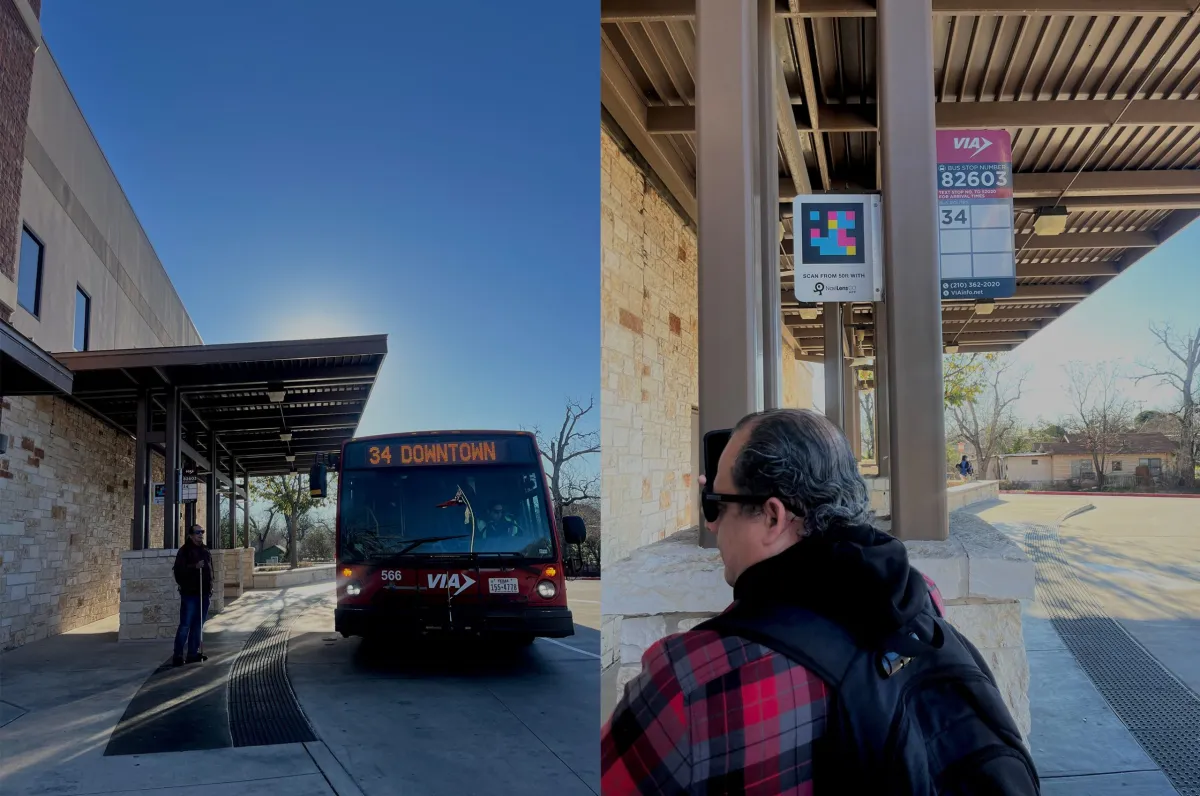
Just about all VIA Metropolitan Transit bus stops across San Antonio are getting small, colorful QR codes, part of a system for blind, low-vision and non-English speaking locals and visitors to better navigate the city.
The NaviLens system is already installed at 100 of San Antonio’s most-used bus stops, and it will be completely installed at more than 6,000 of them within the next year.
The expanding wayfinding system uses an app, where it automatically detects QR codes from up to 50 feet away and gives real-time bus route information for the user in 34 languages.
The Metropolitan Transportation Authority, New York’s metro, already uses the same QR technology, and other companies like Coca-Cola and Kellogg’s are adding it to their packaging.
VIA first tested the system through a pilot program in 2021, adding 100 NaviLens QR codes at San Antonio’s most-used bus stops. It leads the user to the bus stop, reads the QR code in any light condition, without focusing the mobile camera, and works even when a user is unaware they are near a code.
U.S. Rep. Joaquin Castro, D-San Antonio, secured congressional funding for the technology in 2022. VIA trustees approved the plan to expand the program in January 2023.
Having better resources for visually impaired commuters was VIA Trustee Athalie Malone’s goal when she took her seat in 2019. Malone, who is visually impaired, discovered NaviLens while helping to plan a trip to Europe.
“I’ve only been blind 17 years,” Malone said. “When I lost my vision, I was still using the bus. … Where it got harder was to know which bus was coming.”
The audible voice on the bus announcing each stop helped, but the app also helps guide her to the correct stop, she said.
Vibrant Works, formerly named San Antonio Lighthouse for the Blind, partnered with VIA for the pilot program. Ernest Arce, who works at the nonprofit that provides jobs for visually impaired people as a sewing machine operator and uses VIA to get to work, was delighted to learn the system would be expanded to nearly all bus stops.
“That’s wonderful news,” he said Monday, standing outside the bus stop near his job. He hadn’t heard the system was being expanded, but was familiar with it because he’s a daily user at stops that already have NaviLens, including the one at his workplace.
Arce, a native San Antonian who has been blind since birth, was one of the first people to test the program when it rolled out in 2021. He said there wasn’t anything about the system he didn’t like — except that it wasn’t at each stop.
The system gives users real-time bus information, a benefit the previously sought Braille system of signs at the stops wasn’t able to offer.
“If it was in more areas, other blind people would have more use for it,” Arce said.
The system will help non-English speakers too, according to VIA, by giving real-time information in 34 languages so far.
Nadia Mavrakis, CEO of local nonprofit Culturingua, which helps Middle Eastern, South Asian and North African immigrants settle into life in San Antonio, said VIA sought feedback from the immigrant-serving community that has been taken into account. The next step could be adding Pashto.
Pashto is a tier-two language on the City of San Antonio’s language access plan, meaning translation is recommended and interpretation is available upon request for city services.
“Having Pashto would be an important addition to ensure the majority of the Afghan community is able to access VIA services,” she said.








